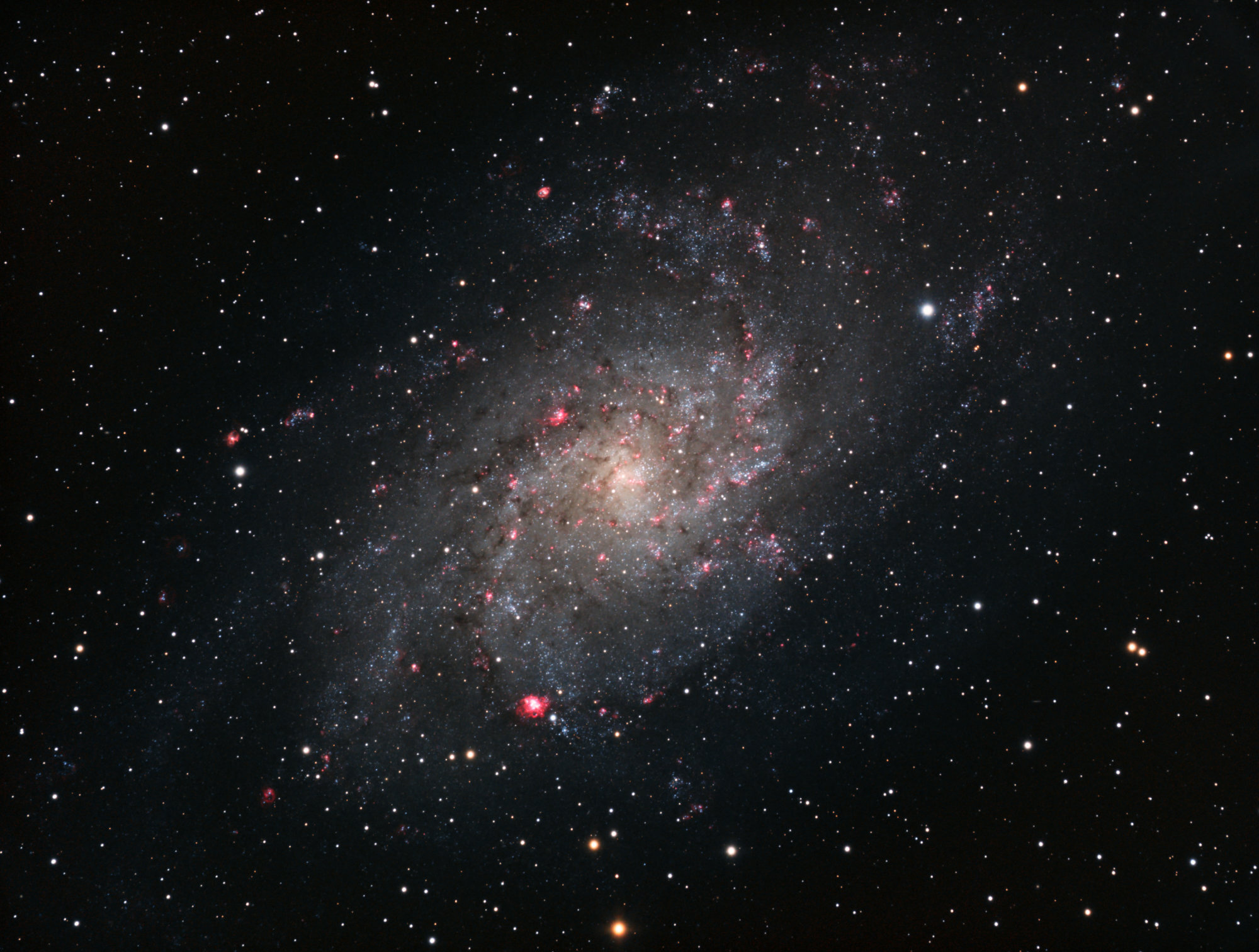
Images
Galactic objects and solar system elements in the form of final images.
Use the filter section on the right to select the objects of interest
M97 - Owl Nebula
M97, or the Owl Nebula, is a small planetary nebula in the constellation Ursa Major. Using Halpha and OIII narrowband filters enabled imaging while the moon was out at almost 100%.
M45 - Pleiades
M45 is a well-known object in the night sky. The large bright blue stars and the surrounding illuminated clouds make for an attractive target. While traveling this was a perfect object to photograph with the recently assembled 60mm travel rig.
M16 - Eagle Nebula
A new travel rig was put together and first light was used to image M16, the Eagle nebula. This is a low summer target and only half an hour of data could be gathered. But the travel setup worked well and holds a lot of promise for the future.
M74 - Phantom Galaxy
M74, also known as the Phantom Galaxy, is about 32 million light-years away from Earth. The galaxy contains two clearly defined spiral arms and is therefore used as an archetypal example of a grand design spiral galaxy.
M1 | Sh2-244 - Crab Nebula
The Crab Nebula is a supernova remnant and pulsar wind nebula in the constellation of Taurus. Imaged here in a Hubble Palette. This is the first image using BlurXTerminator for deconvolution, which is nothing short of a revolution in PixInsight image processing.
M13 - Hercules Cluster
M13, or the Hercules Cluster, is a relatively small, but densely packed globular cluster. A perfect target to test out a new long focal length telescope, the Takahashi Mewlon 180c, in combination with the QHY268c, an APS-C sized OSC camera.
M44 - Beehives Cluster
One of the star clusters closest to Earth is M44, also known as the Beehives Cluster. Big red giants, white dwarfs and young bright blue stars make for a colourful scene. Plenty of additional galaxies and double stars can be discovered in this scene as well.
M35
A nice combination of two star clusters. M35, an open cluster in the constellation Gemini. Only a few hundred stars. The second cluster is NGC2158. It is much further away and therefore looks much smaller. Its old red stars make a nice contrast with the bright blue stars of M35, creating depth.
M31 - Andromeda Galaxy
The galaxy of all galaxies, M31, or Andromeda galaxy. Our neighbour in the universe, at 2.5 million lightyears from Earth. Here photographed in exceptional high resolution of 100 megapixel.
M94- Croc’s Eye Galaxy
The spiral galaxy M94 in the constellation Canes Venatici with rings of gas of different brightness looks like a big eye in the sky and is nicknamed Croc’s eye galaxy.
M63- Sunflower Galaxy
The spiral galaxy M63 in the constellation Canes Venatici with its beautiful spiral structure at more than 29 million lightyears away from Earth.
M101 | Arp26 - Pinwheel Galaxy
The spiral galaxy M101, or Pinwheel Galaxy, is one of the larger galaxies visible. Its face-on position and its visibility all year round, makes it a great target for any Astrophotographer. Adding H-alpha data to the LRGB image highlights the star-forming areas.
M33 - Triangulum Galaxy
A spiral galaxy in the constellation Triangulum, about 2.73 million lightyears from Earth.
M51 Arp85 - Whirlpool Galaxy
One of the earlier ‘real’ images taken at the observatory. A combination of two interacting galaxies. M51, or the Whirlpool galaxy, is an impressive appearance at the night sky, approximately 28 million lightyears from Earth.




















